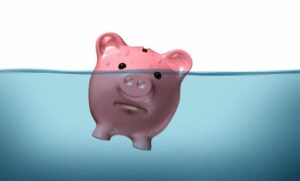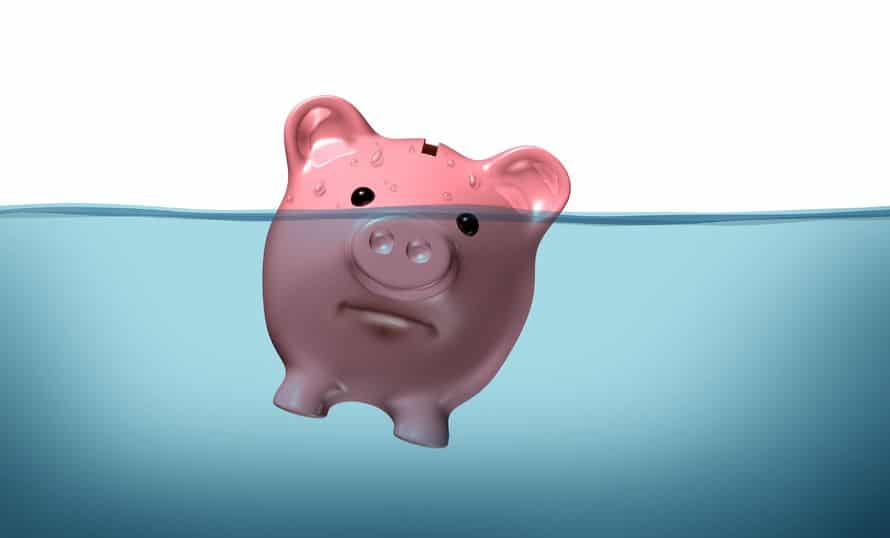 Nine years after the onset of the Great Recession in 2008, the U.S. economy appears to be chugging along: we’re near full employment, the stock market is rocketing past speed bumps like North Korea and Hurricanes Harvey and Irma – even retail sales are up, recording their biggest gains since December of 2016. For the naturally pessimistic, it’s getting increasingly difficult to find any dark clouds within all of that silver lining. So, when the Federal Reserve announced recently that outstanding consumer debt hit an all-time high of $1.021 trillion in June, does the news indicate that the good times may soon end? Or should we all just continue to rack up reward points on our premium credit cards with no thought for their engorged revolving balances? We turn to the experts for considered opinion.
Nine years after the onset of the Great Recession in 2008, the U.S. economy appears to be chugging along: we’re near full employment, the stock market is rocketing past speed bumps like North Korea and Hurricanes Harvey and Irma – even retail sales are up, recording their biggest gains since December of 2016. For the naturally pessimistic, it’s getting increasingly difficult to find any dark clouds within all of that silver lining. So, when the Federal Reserve announced recently that outstanding consumer debt hit an all-time high of $1.021 trillion in June, does the news indicate that the good times may soon end? Or should we all just continue to rack up reward points on our premium credit cards with no thought for their engorged revolving balances? We turn to the experts for considered opinion.
By Rick Ferguson
The last time consumer credit card debt reached current levels - $12.84 trillion, up $552 billion from a year ago – was, in fact, in 2008, right after the housing market imploded, Bear Sterns and Lehman Brothers were buried under an avalanche of collateralized debt obligations, and the US government was forced to intervene in the banking sector to stave off a global economic collapse. Besides credit card debt, debt is ticking up across economic sectors: Total household debt is 14 percent greater than the previous record, in 2008; mortgage debt reached $8.69 trillion in the second quarter of 2017, up $329 billion from last year; student loan debt is $1.34 trillion, up $85 billion; auto loan debt stands at $1.19 trillion, up $55 billion. Meanwhile, credit card delinquencies are also ticking up.
So, that sounds bad. With interest rates still low, the Dow cracking 22,000, and businesses competing for employees, is there any reason to worry about a return to the dark days? First, we’ll check in with said Matt Schulz, senior industry analyst for CreditCards.com, quoted in the Washington Post:
“’We simply can’t keep taking on credit card debt forever without it causing major problems,’ said [Schultz]. ‘This record probably won’t be a major tipping point, but it likely isn’t too far off.’ Schulz says this milestone should be a wake-up call about the level of credit card debt Americans are accumulating… “America’s credit card balances have never been higher, but there’s no reason to think they won’t just keep climbing. Combine that with steadily rising interest rates, and you have a potentially volatile mix.’”
One way to dig behind the numbers is to look at what that revolving credit card debt is buying. If consumers using their credit cards to finance vacations and luxury purchases, then those purchases may indicate continued consumer confidence; if they’re revolving grocery and gasoline purchases, then that’s a sign that the economy is suffering from underlying stress. According to Bloomberg, it’s the latter scenario that should worry us:
“People are borrowing more not necessarily because they’re confident about their financial prospects. They’re doing it for necessities like education or transportation and, in many cases, just to get by. On the surface, liabilities at an all-time high aren’t alarming when the assets side of ledger is taken into account. Household net worth stands at a record $94.8 trillion, thanks to rebounding home values and soaring stock portfolios. But that increase has primarily benefited the nation’s wealthiest, said Lance Roberts, chief investment strategist at Clarity Financial LLC in Houston and editor of the Real Investment Advice newsletter. ‘When you look at net worth, it’s heavily skewed by the top 10 percent,’ Roberts said. ‘The average family of four is living paycheck to paycheck.’”
So, should marketers be worried that the economy is on the verge of dipping into a recession, or worse? For an optimistic view, we turn to Cal State economist Sung Won Sohn, quoted in NPR:
“But while household debt overall is at a record high, Sohn says it needs to be kept in perspective. ‘I don't think this is anything like what we faced in 2007,’ he says. For one, the systemic risk of financial collapse — which arose when banks were making huge bets on bad mortgages — has faded. Also, incomes have been slowly rising. So while overall debt is at a new high, it's still a lower percentage of people's incomes than it was when the financial crisis hit.”
Looking behind the credit card debt numbers, what we may be seeing is, in fact, the increasing bifurcation of the US economy. For the affluent, the economy is going gangbusters: banks chase their spend with increasingly lucrative premium reward cards, which those affluent consumers happily leverage while paying off their monthly balances at higher rates than their forebears – one of the reasons why Chase executives are worried about the profitability of the Chase Sapphire card. For the working class, however, their revolving credit card debt is a household necessity driven by historically low wage gains, swelling student loan debt, and an uptick in subprime lending.
It’s a tale of two economies – and if we reach a tipping point, it will be because the debt stress on the working class becomes too great for the broader economy to bear. The lesson: watch the numbers closely – and remain optimistic even as you prep for the inevitable downturn. While there’s no reason to panic, prudence is often its own reward.
Rick Ferguson is Editor in Chief of the Wise Marketer Group and is a Certified Loyalty Marketing Professional (CLMP).


